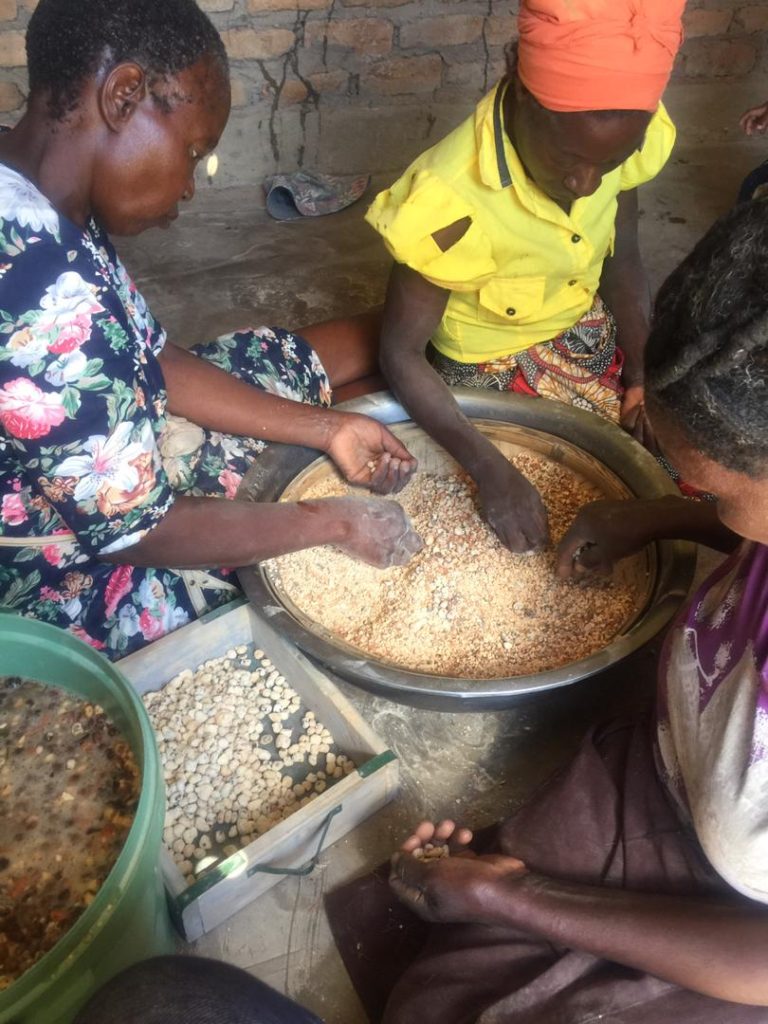
The baobab tree is found in many countries in South, West and East Africa, but many take it for granted. In Zimbabwe, where baobab woodlands are often cleared to make space for farmland, increased interest in the baobab fruit has elicited keen interest to conserve the indigenous African tree, writes Tafadzwa Murangwana

Ten years ago, one of Africa’s oldest known baobab trees, Panke, a giant baobab tree in Zimbabwe, ebbed steadily towards its death, losing a bit of its stem gradually, until it toppled over and died. Scientists said it was 2,500 years old.
The death of the mighty tree didn’t mean much to Ngonidzashe Mazhura, who was a pre-teen then, but years later, in 2019, the power of the baobab became more meaningful to her. Now 20, she was pregnant and getting ready for childbirth. In Chegutu, 100 kilometres away from Zimbabwe’s capital Harare, her mother, Thandiwe, served her baobab porridge, a traditional recipe that youngsters like Ngonidzashe didn’t care much for. However, pregnancy had made her more conscious of healthy eating and talking to her mother, she realised that baobab was a nutrient-packed powerhouse.
Research on the nutritional composition of African baobab by the Food and Agriculture Organisation (FAO) and the World Agroforestry Centre (ICRAF) found that it is high in carbohydrates (energy), fibre, vitamin C, calcium, magnesium and potassium.
“When my mother told me that it could even be used to make coffee, I wanted to learn more,” she told AWiM News.
Intrigued by this information, the idea of Thandie’s Village, her baobab products start-up was born, and with it came the desire to protect the baobab trees that the start-up would depend on.
Tree of life
Zimbabwe is one of the African countries that boast a good cover of baobab ( the Adansonia digitata species), but the woodlands have been converted into farming land, as many farmers are oblivious to its nutritional and economic value. According to Bio-Innovation Zimbabwe, a research and innovation hub that promotes underutilised indigenous plants for food security, the country has an estimated five million baobab trees. The tree is found in the drier parts of the country, affected by drought, which researcher Barbara Stadlmayr said, makes them even more valuable for those areas because the trees “produce even when staple crops fail and in this way bridge the hunger gap during times of food shortage.”

Women processing baobab fruit in Binga, Zimbabwe. The powder is full of nutrients, while the seeds are used to make coffee or oil. | Photo supplied.
Known as the tree of life, the baobab tree doesn’t just provide food, it also provides shelter and the bark can be used for making cloth and rope. Animals also feed on it. Ngonidzashe’s interest in the tree, however, is in the fruit. She works with a group of 18 women, some of them harvesting the fruit in Binga and supplying her for the production of coffee and baobab powder in Chegutu. Many of them are widows and single parents, who were struggling to make ends meet, but found a more stable income as part of the baobab value chain.
According to Bio-Innovation Zimbabwe, fruits are collected from May to September, by women, yielding up to 1,000 kilogrammes of raw pulp and seed. Harvesters earn between $300 to $500 per season, often at the height of the dry season.
In 2018, a Nature Plants study of baobab trees in southern Africa, including in Zimbabwe, raised the alarm that African baobab trees were dying off. The researchers said they couldn’t find any signs that the deaths were caused by disease, and suggested that the deaths might have been caused by a change in the climate. They called for more research, even as other scientists pointed out that their sample of 60 trees was too small.
Conserving baobab
For Ngonidzashe and other Africans reaping the benefits of the baobab tree, the idea of losing a tree many have taken for granted inspires the urgency to conserve it. Ngonidzashe has only run her baobab business for a year, but she is already thinking of the future of the woodlands that are now a source of livelihood for her and more than a dozen other women who work with her.
“We are looking to plant more trees in all areas where we harvest because even after we harvest, we will need more baobabs,” she said, adding that because baobab pulp has been labelled a ‘superfood’ in the West in recent years, demand for it will mean the need for more trees to meet supply.
According to Advocates 4 Earth Director Lenin Tinashe Chisaira, sustainable management of indigenous trees such as baobabs is easier when local communities find economic value in them, because they are motivated to conserve them.
Siyabonga Ndlovu, 65, a farmer in Siabuwa in Binga District, who harvests baobab fruits for various processing companies, told AWiM News that now that more people are aware of the economic benefits of the tree, they have more incentive to conserve it.
“I have noticed that even our local leaders are now aware of the economic benefits of the tree hence punitive measures are now being enacted against cutting down of these trees,” she said.
Bio-Innovation Zimbabwe, on the other hand, urges commercial producers to focus on products derived from the fruit and seeds, rather than from the leaves or bark, to ensure sustainability.
As more people find value in the baobab and the need to conserve it, Advocates 4 Earth boss Chisaira told AWiM News that there would be a need for regulation of fruit harvesting to prevent women in local communities, many of who work as harvesters, from exploitation.
“A law must be put in place to control the collection of wild fruits like baobab because some companies may take advantage of the communities,” she said.




2 Responses
Good, well written story
Well written and Highly informative piece …